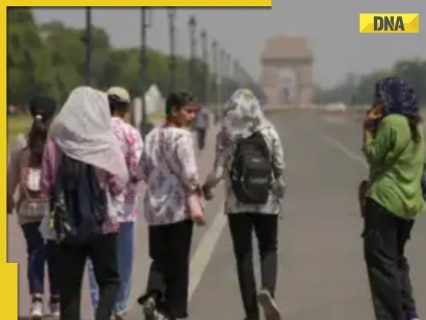Now Reading: IMD Issues Heatwave Alert for Delhi-NCR, Warns of Rising Temperatures
-
01
IMD Issues Heatwave Alert for Delhi-NCR, Warns of Rising Temperatures
IMD Issues Heatwave Alert for Delhi-NCR, Warns of Rising Temperatures

Fast Summary:
- IMD recorded the highest maximum temperature of 47.4°C in Rajasthan’s Sri Ganganagar on June 9.
- Delhi and NCR are under a yellow alert due to ongoing heat-wave conditions, with temperatures ranging between 41-45°C predicted from June 9 to June 11.
- delhi’s Safdarjung station recorded a high of 42.1°C on Sunday, two notches above normal; the city may see relief by June 13 and 14 as temperatures dip slightly between 37-40°C with light rainfall expected later in the week.
- Surrounding areas including Haryana, Punjab, Chandigarh, and Uttar Pradesh are also experiencing extreme heat but may receive moderate rainfall soon.
- Mumbai reports stalled monsoon progression but anticipates intensified rainfall from June 10 onward; Kerala and Karnataka forecast heavy rains on June 13 and 14.
- Northeast India is set for isolated heavy rains between June 10-14 in Arunachal Pradesh, Assam, Meghalaya, and Tripura.
- Health authorities advise caution regarding heatwave impacts on vulnerable populations such as infants and elderly individuals with chronic conditions.
- Concerns raised over outdated reporting systems affecting public awareness and policy action surrounding weather-related events.
Indian Opinion Analysis:
Extreme weather patterns across India highlight both immediate health risks for vulnerable populations as well as broader challenges associated with climate resilience planning. The ongoing heatwave in northern regions signals urgent needs for awareness campaigns promoting hydration practices while emphasizing adaptive infrastructure solutions-like shaded public spaces or cooling centers-in urban environments like Delhi NCR.
Meanwhile, delayed monsoon advancement along western coasts paired with intensified bursts of rain underscore variability concerns likely tied to climate change effects that demand improved forecasting models nationwide.In Northeast India’s case of continuous heavy rainfall warnings amidst scheduled relief elsewhere-broader meteorological coordination emphasized by research findings could bolster disaster mitigation efficacy moving forward.
Such updates reveal opportunities for strengthened inter-departmental responses crucial to shielding all socio-economic classes equally across extreme summer months ahead.

























